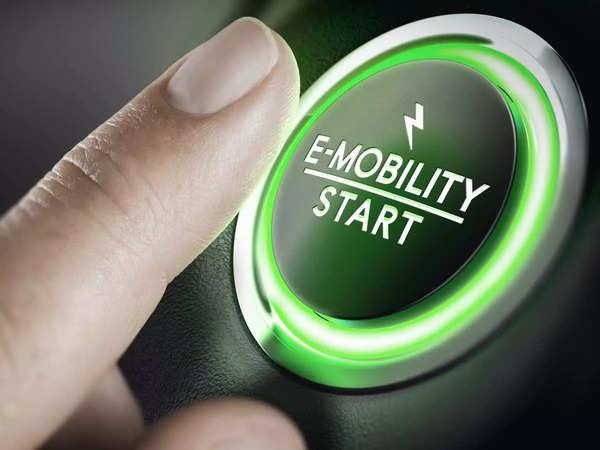Honda Motorcycle & Scooter India (HMSI) has announced that it targets to produce 10 lakh electric vehicles (EVs) from its Karnataka factory by 2030. The company aims to achieve this target by setting up a dedicated EV production line at its Narsapura plant in Karnataka.
HMSI is one of the leading two-wheeler manufacturers in India and has been selling EVs in the country since 2020. However, the company has been lagging behind its rivals in terms of EV sales. In FY22, HMSI sold only 1,283 EVs, while its rivals Hero Electric and Bajaj Auto sold 4.3 lakh and 5.1 lakh EVs, respectively.
HMSI's decision to set up a dedicated EV production line in Karnataka is a significant development for the company's EV ambitions. The new production line is expected to have a capacity of 10 lakh units per year.
HMSI has also announced that it will launch two new EVs in the Indian market in FY24. The company has not revealed any details about the new EVs, but it is expected to launch a scooter and a motorcycle.
Benefits of HMSI's EV target
HMSI's EV target is expected to have a number of benefits, including:
- Accelerated adoption of EVs: HMSI's EV target will help to accelerate the adoption of EVs in India. The company's large production capacity and wide network of dealerships will make EVs more accessible to consumers.
- Reduced air pollution: EVs produce zero emissions, so HMSI's EV target will help to reduce air pollution in India. Air pollution is a major public health concern in India, and HMSI's EV target can play a significant role in improving air quality.
- Improved public health: Air pollution is a major cause of respiratory and other health problems. HMSI's EV target will help to improve public health by reducing air pollution.
- Reduced greenhouse gas emissions: EVs produce zero greenhouse gas emissions, which contribute to climate change. HMSI's EV target will help to reduce greenhouse gas emissions from the transportation sector in India.
- Job creation: HMSI's EV target is expected to create new jobs in the company's EV production line and dealership network.
Challenges
HMSI will need to address some challenges in order to achieve its EV target, including:
- Accelerated adoption of EVs: HMSI's EV target will help to accelerate the adoption of EVs in India. The company's large production capacity and wide network of dealerships will make EVs more accessible to consumers.
- Reduced air pollution: EVs produce zero emissions, so HMSI's EV target will help to reduce air pollution in India. Air pollution is a major public health concern in India, and HMSI's EV target can play a significant role in improving air quality.
- Improved public health: Air pollution is a major cause of respiratory and other health problems. HMSI's EV target will help to improve public health by reducing air pollution.
- Reduced greenhouse gas emissions: EVs produce zero greenhouse gas emissions, which contribute to climate change. HMSI's EV target will help to reduce greenhouse gas emissions from the transportation sector in India.
- Job creation: HMSI's EV target is expected to create new jobs in the company's EV production line and dealership network.
Challenges
HMSI will need to address some challenges in order to achieve its EV target, including:
- Cost: EVs are currently more expensive than petrol and diesel vehicles. HMSI will need to make EVs more affordable for consumers in order to achieve its EV target.
- Awareness: Many people are not yet aware of the benefits of EVs. HMSI will need to raise awareness of EVs and their benefits in order to promote their adoption.
- Infrastructure: India needs more EV charging stations and battery swapping stations. The government of India and the private sector will need to invest in developing the necessary infrastructure to support the growth of EVs.
Conclusion
HMSI's EV target is a welcome development for the EV industry in India. The company's large production capacity and wide network of dealerships will make EVs more accessible to consumers. HMSI's EV target is expected to have a number of benefits, including accelerated adoption of EVs, reduced air pollution, improved public health, reduced greenhouse gas emissions, and job creation.
HMSI will need to address some challenges, such as cost, awareness, and infrastructure, in order to achieve its EV target. However, with the right support, HMSI can play a significant role in making India a leader in the EV market.
Additional thoughts
The government of India is supportive of the EV industry and has set ambitious targets for the growth of the industry. The government has offered a number of incentives for the adoption of EVs, such as subsidies, tax breaks, and priority parking. The government has also set a target of having 30% of all new vehicle sales in India to be electric by 2030.
HMSI's EV target is in line with the government of India's targets for the EV industry. The company's EV target will help India to achieve its EV goals and make the country a leader in the EV market.
Other two-wheeler manufacturers in India, such as Hero Electric and Bajaj Auto, are also investing heavily in EV production. This is a good sign for the EV industry in India. It shows that the two-wheeler manufacturers believe in the potential of the EV market and are committed to making EVs more popular in the country.
The growing competition among two-wheeler manufacturers is expected to benefit consumers.






